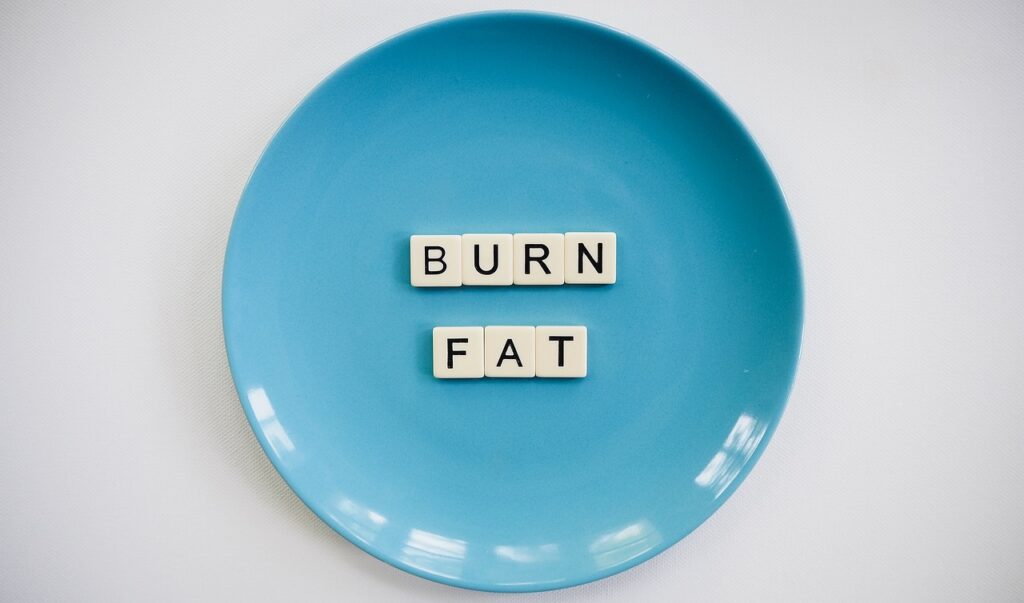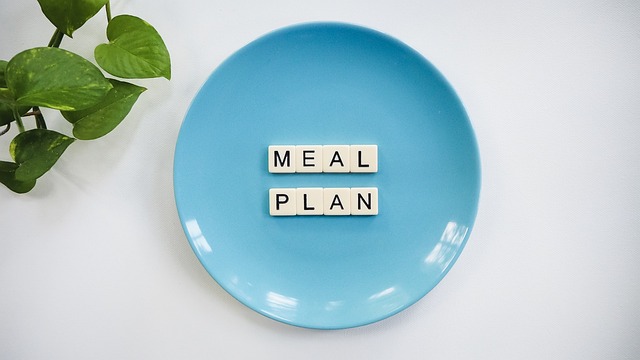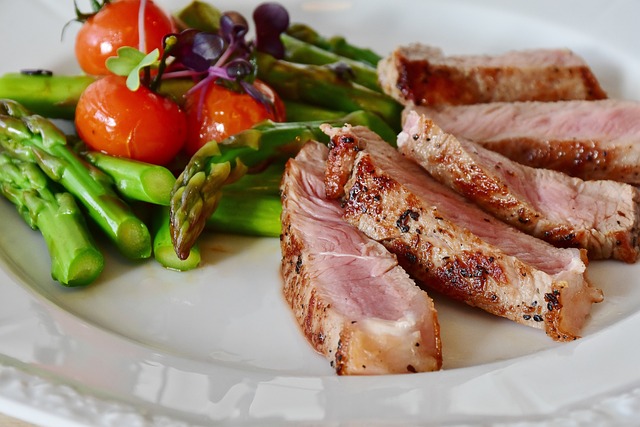
Fat burning diets are popular among individuals who are looking to lose weight and improve their overall health. These diets are designed to increase metabolism and burn fat, while also providing the body with the necessary nutrients to function properly. While there are many different types of fat burning diets, they all share the common goal of helping individuals achieve their weight loss goals.
One popular type of fat burning diet is the ketogenic diet, which involves consuming high amounts of healthy fats, moderate amounts of protein, and very low amounts of carbohydrates. This diet forces the body to burn fat for energy instead of carbohydrates, which can lead to significant weight loss. Another type of fat burning diet is the paleo diet, which involves eating whole, unprocessed foods that are high in protein and healthy fats, and low in carbohydrates.
While fat burning diets can be effective for weight loss and improving overall health, it is important to consult with a healthcare professional before starting any new diet or exercise program. Additionally, it is important to maintain a balanced and nutritious diet, as well as engage in regular physical activity, in order to achieve long-term weight loss and overall health goals.
Table of Contents
Understanding Fat Burning
The Science of Metabolism
Metabolism is the process by which the body converts food into energy. It is a complex process that involves a series of chemical reactions that occur in the body. The rate at which the body burns calories is influenced by several factors, including age, gender, weight, and activity level.
The body’s metabolism can be divided into two categories: catabolism and anabolism. Catabolism is the breakdown of complex molecules into simpler ones, while anabolism is the synthesis of complex molecules from simpler ones. When the body is in a state of catabolism, it is burning calories. In contrast, when the body is in a state of anabolism, it is storing calories.
Caloric Deficit Explained
A caloric deficit occurs when the body burns more calories than it consumes. This can be achieved by reducing the number of calories consumed or by increasing the number of calories burned through exercise. When the body is in a state of caloric deficit, it begins to burn stored fat for energy. This is why a caloric deficit is often recommended as a way to lose weight.
It is important to note that a caloric deficit should be achieved gradually and in a healthy manner. Extreme caloric deficits can lead to muscle loss, nutrient deficiencies, and other health problems. It is recommended that individuals aim for a caloric deficit of 500-1000 calories per day to achieve safe and sustainable weight loss.
In conclusion, understanding the science of metabolism and caloric deficit is crucial for anyone looking to lose weight and burn fat. By making healthy lifestyle choices, such as consuming a balanced diet and engaging in regular exercise, individuals can achieve their weight loss goals in a safe and sustainable manner.
Popular Fat Burning Diets
Ketogenic Diet
The Ketogenic Diet is a high-fat, low-carbohydrate diet that has been gaining popularity in recent years. This diet is designed to force the body to burn fat for energy instead of carbohydrates. By drastically reducing carbohydrate intake, the body enters a state of ketosis, where it begins to burn fat for fuel. This diet has been shown to be effective for weight loss, as well as improving blood sugar control and reducing the risk of certain diseases.
Intermittent Fasting
Intermittent Fasting is a diet that involves periods of fasting followed by periods of eating. There are several different types of intermittent fasting, but the most popular involves fasting for 16 hours and eating during an 8-hour window. This diet has been shown to be effective for weight loss, as well as improving blood sugar control and reducing inflammation in the body.
Paleo Diet
The Paleo Diet is based on the idea that humans should eat the same foods as our ancestors did during the Paleolithic era. This means avoiding processed foods, grains, and dairy, and focusing on meat, fish, vegetables, and fruits. This diet has been shown to be effective for weight loss, as well as improving blood sugar control and reducing inflammation in the body.
Low-Carb, High-Protein Diet
The Low-Carb, High-Protein Diet is a diet that involves reducing carbohydrate intake and increasing protein intake. This diet has been shown to be effective for weight loss, as well as improving blood sugar control and reducing the risk of certain diseases. However, it is important to note that this diet may not be suitable for everyone, particularly those with kidney disease or other health conditions.
Nutritional Strategies for Fat Loss
Macronutrient Composition
A diet that is high in protein and low in carbohydrates has been shown to be effective for fat loss. Protein helps to build and repair muscle tissue, which can increase metabolism and burn more calories. Carbohydrates should be limited, especially simple carbohydrates, which can cause spikes in blood sugar levels and lead to overeating.
Meal Timing and Frequency
Eating smaller, more frequent meals throughout the day can help to keep metabolism elevated and prevent overeating. It is also important to eat breakfast every day, as this can jumpstart metabolism and help to control appetite. However, the total number of calories consumed throughout the day is still the most important factor for fat loss.
Hydration and Fat Loss
Drinking plenty of water can help to support fat loss by increasing metabolism and reducing appetite. In addition, drinking water before meals can help to reduce calorie intake. Adequate hydration is also important for maintaining energy levels during exercise, which can further support fat loss.
Overall, a combination of these nutritional strategies can help to support fat loss. However, it is important to remember that sustainable fat loss requires a long-term commitment to healthy eating habits and regular exercise.
Exercise and Fat Burning
Cardiovascular Exercises
Cardiovascular exercises are an effective way to burn fat. These exercises increase the heart rate, which leads to the burning of calories. Examples of cardiovascular exercises include running, cycling, swimming, and jumping rope. The American Heart Association recommends at least 150 minutes of moderate-intensity cardiovascular exercise per week.
Strength Training
Strength training is another effective way to burn fat. Strength training builds muscle, which increases the body’s metabolism. The body burns more calories at rest when it has more muscle. Examples of strength training exercises include lifting weights, doing push-ups, and using resistance bands. The American College of Sports Medicine recommends strength training at least two days per week.
High-Intensity Interval Training (HIIT)
High-Intensity Interval Training (HIIT) is a popular way to burn fat. HIIT involves short bursts of intense exercise followed by periods of rest. This type of exercise increases the body’s metabolism and burns more calories than traditional cardiovascular exercise. Examples of HIIT exercises include sprinting, jumping jacks, and burpees. The American Council on Exercise recommends HIIT workouts 1-2 times per week.
Incorporating a combination of cardiovascular exercise, strength training, and HIIT into a fat-burning diet can lead to significant results. It is important to consult with a healthcare professional before starting any exercise program.
Lifestyle Factors Influencing Fat Loss
Sleep and Recovery
Getting enough sleep is crucial for weight loss. Lack of sleep can lead to hormonal imbalances that can cause weight gain. When a person is sleep-deprived, their body produces more of the hormone ghrelin, which stimulates hunger, and less of the hormone leptin, which signals fullness. This can cause a person to overeat, leading to weight gain.
Stress Management
Stress can have a negative impact on weight loss. When a person is stressed, their body produces cortisol, a hormone that can increase appetite and lead to weight gain. Stress can also cause a person to crave unhealthy foods, which can sabotage weight loss efforts. Practicing stress-reducing techniques, such as meditation or yoga, can help manage stress and support weight loss.
Behavioral Changes
Making small changes in daily habits can have a big impact on weight loss. Eating slowly, drinking plenty of water, and avoiding distractions while eating can help a person eat less and feel more satisfied. Keeping healthy snacks on hand and planning meals ahead of time can also help a person make healthier food choices. Regular exercise is also important for weight loss and overall health.
In summary, getting enough sleep, managing stress, and making small behavioral changes can all support weight loss efforts.
Supplements for Enhancing Fat Loss
Natural Supplements
Natural supplements can aid in fat loss when combined with a healthy diet and exercise routine. Some of the natural supplements that have been found to aid in fat loss include green tea extract, caffeine, and conjugated linoleic acid (CLA). Green tea extract contains catechins that have been found to increase metabolism and fat oxidation. Caffeine has been found to increase fat oxidation and energy expenditure. CLA has been shown to reduce body fat mass and increase lean body mass.
Thermogenic Aids
Thermogenic aids can increase the body’s metabolic rate and promote fat loss. Some of the thermogenic aids that have been found to be effective include Yohimbine, Capsaicin, and Synephrine. Yohimbine has been found to increase fat oxidation and decrease body fat percentage. Capsaicin has been shown to increase energy expenditure and decrease appetite. Synephrine has been found to increase metabolic rate and fat oxidation.
Appetite Suppressants
Appetite suppressants can help reduce food intake and promote fat loss. Some of the appetite suppressants that have been found to be effective include fiber, protein, and Hoodia. Fiber can help reduce appetite by increasing feelings of fullness and reducing hunger. Protein can also promote feelings of fullness and reduce appetite. Hoodia is a natural appetite suppressant that has been used for centuries by the San people of South Africa to suppress hunger during long hunts.
It is important to note that while these supplements can aid in fat loss, they should not be relied on as the sole method for weight loss. A healthy diet and exercise routine should always be the foundation for any weight loss program. Additionally, it is important to consult with a healthcare professional before starting any new supplement regimen.
Monitoring Progress
Tracking Body Composition
To monitor progress while on a fat burning diet, it is important to track changes in body composition. This can be done using various methods such as body weight, body fat percentage, and body measurements. It is recommended to use more than one method to get a more accurate picture of progress.
One way to track body composition is by weighing oneself regularly. However, it is important to note that body weight alone does not provide an accurate measure of progress as it does not distinguish between fat loss and muscle gain. Therefore, it is recommended to also track body fat percentage using methods such as skinfold calipers or bioelectrical impedance analysis.
In addition to body weight and body fat percentage, taking body measurements can also be helpful in tracking progress. Measuring areas such as the waist, hips, and thighs can help to identify changes in body shape and composition.
Adjusting the Diet Plan
As progress is monitored, adjustments to the diet plan may need to be made to continue seeing results. If weight loss stalls or body fat percentage stops decreasing, it may be necessary to adjust caloric intake or macronutrient ratios.
It is important to make gradual adjustments to the diet plan rather than making drastic changes all at once. This allows the body to adapt and prevents the risk of losing muscle mass.
In addition to adjusting the diet plan, incorporating regular exercise can also help to continue seeing progress. A combination of cardio and strength training can help to burn fat and build muscle, leading to a leaner and more toned physique.
Safety Considerations and Health Implications
Recognizing Fad Diets
When considering a fat burning diet, it is important to recognize fad diets. Fad diets are diets that promise quick weight loss without scientific evidence to support their claims. These diets often restrict or eliminate certain food groups and may require the use of supplements or other products.
Some common fad diets include the “juice cleanse” diet, the “cabbage soup” diet, and the “grapefruit” diet. These diets may result in rapid weight loss, but they can also be dangerous. They may cause nutrient deficiencies, dehydration, and other health problems.
Consulting Healthcare Professionals
Before starting any fat burning diet, it is important to consult with a healthcare professional. A healthcare professional can help determine if a diet is safe and appropriate for an individual’s health needs.
Individuals with certain health conditions, such as diabetes or heart disease, may need to follow a specific diet plan. Pregnant or breastfeeding women should also consult with their healthcare provider before starting a fat burning diet.
In addition, it is important to monitor any changes in health while following a fat burning diet. Rapid weight loss can be a sign of an underlying health condition and should be evaluated by a healthcare professional.
Overall, it is important to approach fat burning diets with caution and to prioritize safety and health.
Frequently Asked Questions
What is the most effective diet plan for reducing belly fat?
There is no one-size-fits-all answer to this question, as the most effective diet plan for reducing belly fat varies from person to person. However, a diet that is low in processed foods and high in protein, fiber, and healthy fats is generally recommended. It’s also important to reduce overall calorie intake and maintain a calorie deficit.
Can you list foods that help in burning fat, especially during the night?
Some foods that may help with fat burning include lean protein sources, such as chicken and fish, as well as fruits and vegetables that are high in fiber. It’s important to note that there is no evidence to suggest that certain foods specifically aid in fat burning during the night.
What exercises are most efficient for losing belly fat?
Exercises that target the abdominal muscles, such as crunches and planks, can be effective for strengthening the core and reducing belly fat. However, it’s important to engage in a variety of exercises that work the entire body, such as cardio and strength training.
Are there any drinks that can aid in fat burning?
Some studies suggest that green tea and coffee may have fat-burning properties, but the evidence is not conclusive. It’s important to remember that sugary drinks, such as soda and juice, can contribute to weight gain and should be avoided.
What are the top five foods known to promote fat loss?
There is no definitive list of the top five foods that promote fat loss, as weight loss is complex and varies from person to person. However, foods that are high in protein, fiber, and healthy fats, such as nuts, seeds, and avocados, can be beneficial for weight loss.
How can one achieve rapid fat loss?
While rapid fat loss is possible, it is not recommended as it can be unhealthy and unsustainable. Instead, it’s important to focus on making long-term lifestyle changes, such as following a balanced diet and engaging in regular exercise. Gradual weight loss is generally more sustainable and healthier in the long run.

